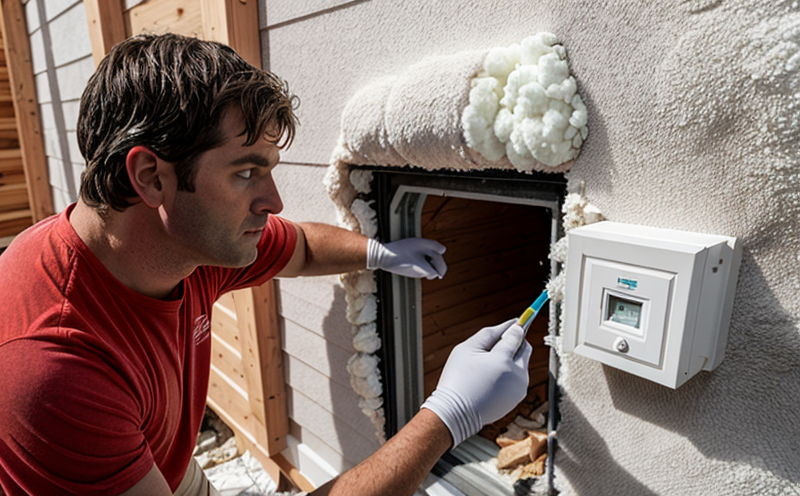ASTM C1363 Thermal Performance of Building Envelope
The ASTM C1363 standard test method evaluates the thermal performance of building envelopes. This is crucial for ensuring that buildings meet energy efficiency standards and maintain comfortable interior conditions under various environmental conditions.
In essence, ASTM C1363 provides a standardized approach to measuring how well a building envelope resists heat loss or gain. This involves testing a representative specimen in controlled laboratory conditions that simulate actual field performance. The test helps manufacturers, architects, and builders assess the thermal properties of materials used in walls, roofs, floors, and other components.
The ASTM C1363 method is particularly important for ensuring compliance with regulatory requirements such as ASHRAE 90.1 and LEED certifications. It also supports continuous improvement by providing data on how changes to design or materials affect a building’s energy efficiency.
The testing process involves preparing a representative specimen, placing it in a chamber where environmental conditions can be precisely controlled, and then measuring heat flow through the specimen under defined temperature differences. This allows for accurate comparisons between different materials and designs.
Understanding ASTM C1363 is essential for professionals involved in construction and building science. It helps them make informed decisions about material selection and design optimization to enhance energy efficiency, reduce operational costs, and improve occupant comfort. By using this standard test method, stakeholders can ensure that their projects meet high-quality standards while contributing positively to sustainability goals.
The following table summarizes some key aspects of ASTM C1363:
| Aspect | Description |
|---|---|
| Test Specimen | A representative sample of the building envelope component. |
| Environmental Conditions | Controlled temperature and humidity levels simulating real-world scenarios. |
| Heat Flow Measurement | The amount of thermal energy transferred through the specimen over time. |
| Energy Efficiency Assessment | An evaluation of how effectively the specimen retains heat or prevents it from escaping. |
Industry Applications
- Evaluating the thermal performance of building envelopes for compliance with energy codes and standards.
- Assisting architects, engineers, and contractors in selecting materials that optimize energy efficiency.
- Providing data to support ongoing research into new technologies aimed at improving insulation properties.
Why Choose This Test
- Precision in measuring heat flow through building envelope components.
- Compliance with international standards like ASTM C1363, ensuring consistent quality across projects.
- Support for sustainable design practices by identifying the most efficient materials and designs.
International Acceptance and Recognition
The ASTM C1363 test method is widely recognized globally for its accuracy and reliability. It is used in numerous countries to evaluate the thermal performance of building envelopes, ensuring that buildings meet local energy efficiency requirements.
This standard has been adopted by organizations such as ASHRAE (American Society of Heating, Refrigerating and Air-Conditioning Engineers) and LEED (Leadership in Energy and Environmental Design). Its acceptance demonstrates a commitment to high-quality standards and continuous improvement within the construction industry.





